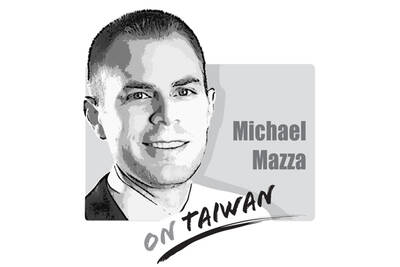Beipiao (北漂), or “northern drifter,” has become a popular catchphrase in the political arena. It has prompted bickering among mayoral and county commissioner candidates and stirred up debate among talking heads on political TV shows since Chinese Nationalist Party (KMT) Kaohsiung mayoral candidate Han Kuo-yu (韓國瑜) claimed that as of last year, nearly 410,000 Kaohsiung natives had moved to Taipei in search of better jobs.
Beipiao originated in China, where “Beijing drifter” denoted young people from provincial areas who left their hometowns in search of work opportunities in the Chinese capital.
Blaming 20 years of Democratic Progressive Party (DPP) governance of Kaohsiung for making the city “old and poor,” Han has pledged that, if he is elected mayor on Nov. 24, he would double its population in 10 years — from 2.77 million people to 5 million — by shoring up investments to create abundant job growth.
However, statistics suggest that the “northern drifter” phenomenon has affected all of Taiwan, not just Kaohsiung. According to government data, New Taipei City has a population of 700,000 “northern drifters” from Yunlin County, while the population in Miaoli decreased from 561,000 in 2008 to 533,000 last year, with nearly 28,000 having relocated to Taipei.
Floating populations are a general trend in contemporary society, and Taiwan is no exception. As the capital, Taipei doubles as the political center and economic hub. Its better opportunities and resources are a talent magnet, drawing people from across the nation.
The era of authoritarian rule under the former KMT regime concentrated all of the political power, fiscal power and virtually all of the nation’s resources, major public infrastructure, commercial headquarters and other services in Taipei, resulting in the regional disparities of today.
In other words, while beipiao might be a popular term now, the phenomenon that it depicts has been around for 60 years. It is dumbfounding to witness KMT politicians seeming to only now discover it.
The nation has been plagued by a decades-old regional imbalance and is certainly in serious need of having administrative and economic resources redistributed.
During a plenary question-and-answer session at the Legislative Yuan in October last year, Premier William Lai (賴清德) proposed relocating the nation’s capital to Taichung, expressing the hope of having northern Taiwan serve as the economic hub, central Taiwan as the administrative hub and southern Taiwan as the political hub.
In 2016, when Lai was mayor of Tainan, he proposed that the Presidential Office should be relocated there, saying that relocating government agencies from Taipei to other cities would solve uneven north-south development.
President Tsai Ing-wen (蔡英文) on Sunday said that past administrations focused more on developing the north than the south, and again promised to develop Kaohsiung into a center of technological development for the national defense industry.
As the saying goes: “Well begun is half done.” From the expectations and pledges of Lai, Tsai and Han, the DPP and the KMT seem to be sharing a rare moment of agreement, finally seeing eye-to-eye on the need to rebalance the economic and political divergence between northern and southern Taiwan.
Hopefully they will press on, realizing their goal of righting the balance of regional development in the nation — and not just settle for blowing hot air or painting rosy pictures at election time.
The image was oddly quiet. No speeches, no flags, no dramatic announcements — just a Chinese cargo ship cutting through arctic ice and arriving in Britain in October. The Istanbul Bridge completed a journey that once existed only in theory, shaving weeks off traditional shipping routes. On paper, it was a story about efficiency. In strategic terms, it was about timing. Much like politics, arriving early matters. Especially when the route, the rules and the traffic are still undefined. For years, global politics has trained us to watch the loud moments: warships in the Taiwan Strait, sanctions announced at news conferences, leaders trading
The saga of Sarah Dzafce, the disgraced former Miss Finland, is far more significant than a mere beauty pageant controversy. It serves as a potent and painful contemporary lesson in global cultural ethics and the absolute necessity of racial respect. Her public career was instantly pulverized not by a lapse in judgement, but by a deliberate act of racial hostility, the flames of which swiftly encircled the globe. The offensive action was simple, yet profoundly provocative: a 15-second video in which Dzafce performed the infamous “slanted eyes” gesture — a crude, historically loaded caricature of East Asian features used in Western

Is a new foreign partner for Taiwan emerging in the Middle East? Last week, Taiwanese media reported that Deputy Minister of Foreign Affairs Francois Wu (吳志中) secretly visited Israel, a country with whom Taiwan has long shared unofficial relations but which has approached those relations cautiously. In the wake of China’s implicit but clear support for Hamas and Iran in the wake of the October 2023 assault on Israel, Jerusalem’s calculus may be changing. Both small countries facing literal existential threats, Israel and Taiwan have much to gain from closer ties. In his recent op-ed for the Washington Post, President William
A stabbing attack inside and near two busy Taipei MRT stations on Friday evening shocked the nation and made headlines in many foreign and local news media, as such indiscriminate attacks are rare in Taiwan. Four people died, including the 27-year-old suspect, and 11 people sustained injuries. At Taipei Main Station, the suspect threw smoke grenades near two exits and fatally stabbed one person who tried to stop him. He later made his way to Eslite Spectrum Nanxi department store near Zhongshan MRT Station, where he threw more smoke grenades and fatally stabbed a person on a scooter by the roadside.